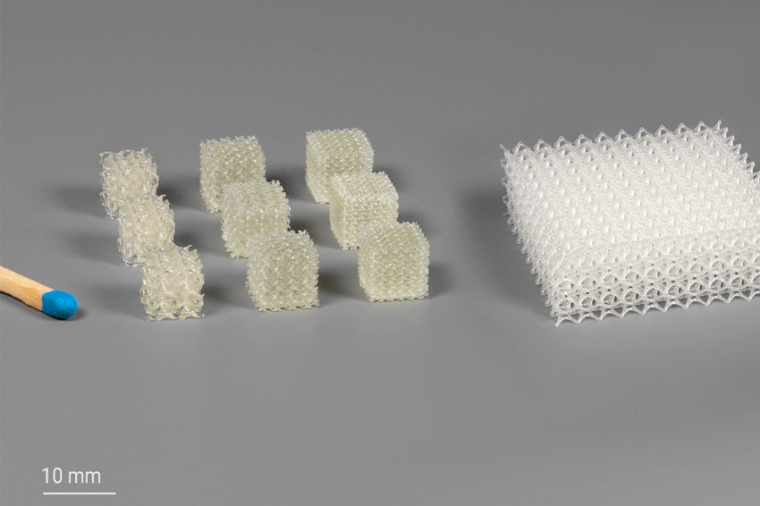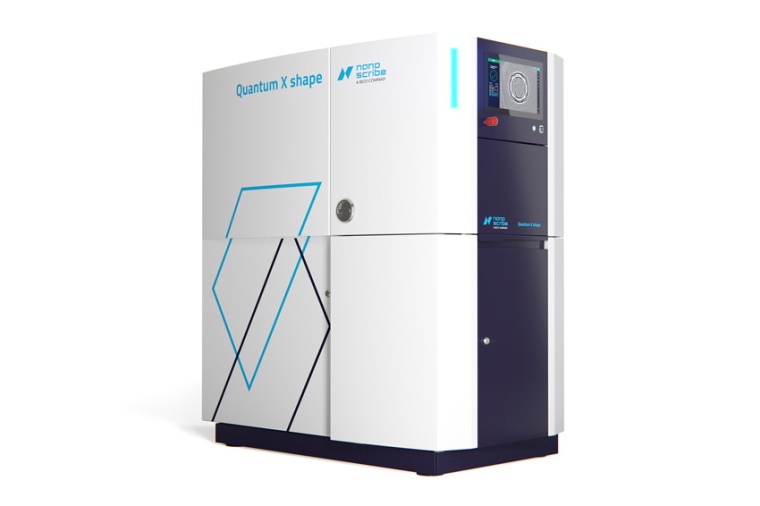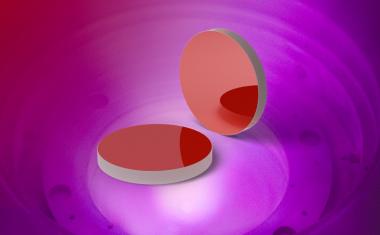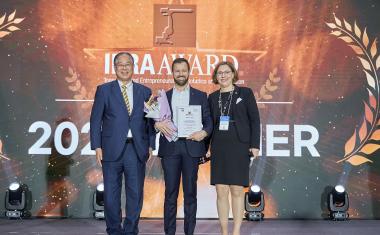How to go from nano to macro in 3D printing
Nanoscribe extends 3D microfabrication to print macroscopic structures with the new Extra Large Features (XLF) Print Set which expands the functionality of an existing machine and turns it into a blazing-fast precision printer for millimeter- and centimeter-sized parts.
The Karlsruhe-based member of the Bico group introduced an expansion of the manufacturing range for its high-precision 3D printer Quantum X shape from nano- and microscale structures to macroscopic objects, while maintaining particularly complex structures and filigree details. The new XLF Print Set speeds up high-precision 3D printing many times over, making the Nanoscribe machine the preferred choice for batch production of voluminous objects.


Thanks to the inherent advantages of Two-Photon Polymerization (2PP), this high-precision 3D printing technology is proven to be at least one hundred times more precise than comparable technologies such as high-resolution SLA and DLP or projection microstereolithography (PµSL). Until now, 2PP was limited to object sizes of just a few millimeters. With the new set, the high-precision 3D printing technology can now be seamlessly extended to centimeter-sized objects, with precision typically two to five times higher than comparable microfabrication technologies. In a single pass, objects up to thirty cubic centimeters can be produced.
“The XLF Print Set brings a whole new world of opportunities to the Quantum X shape,” says Dr Michael Thiel, chief science officer and co-founder of Nanoscribe. “First and foremost, you gain a tremendous speed up in manufacturing large print quantities of voluminous objects in one batch,” Thiel summarizes one key benefit of the new XLF Print Set.
The XLF Print Set now makes it possible to print large parts with filigree features or even many millimeter-sized parts with complex structures or finest details. The Nanoscribe Quantum X shape is a laser-based 3D printing platform with straightforward processes and reliable workflows, so highly precise and accurate printing results are also achieved with the new XLF Print Set. It contains a new air objective with a magnification factor of 5x, resulting in an increased print field diameter of up to 3,200 µm and a comparatively large working distance of 18.5 mm. Combined with a high scanning speed, adjustable voxel sizes, and a highly sensitive photopolymer resin, the XLF Print Set provides a comprehensive solution for high-precision 3D printing in the milli and centimeter range. It is therefore an attractive solution for prototyping and manufacturing, for example, mechanical parts such as millimeter-sized connectors and housings, microfluidic structures, and scaffolds for biomedical research.
Company
Nanoscribe GmbH & Co. KGHermann-von-Helmholtz-Platz 6
76344 Eggenstein-Leopoldshafen
Germany
most read

Softbank acquires ABB's robotics business
The Softbank Group has reached a definitive agreement to acquire ABB's robotics business.

New member of the board of VDMA Robotics + Automation
Dr. Michael Jürgens, CEO of Kuka Robotics, has been appointed to the board of the VDMA trade association.

Laser Components: customized laser optics since 1986
Laser Components began coating individual laser optics almost 40 years ago. These are used in laser processes in numerous industries, including medicine, defense and aerospace.

HMS Networks takes over Industrial Communications division from Molex
This strategic acquisition includes intellectual property in hardware and software, a product portfolio with network cards and software stacks, as well as customer relationships in the USA and Japan.

Otto wins IERA Award 2025
Rockwell's robot is an AMR solution that can transport heavy loads in factories and operate in robot fleets of over 100 units.






